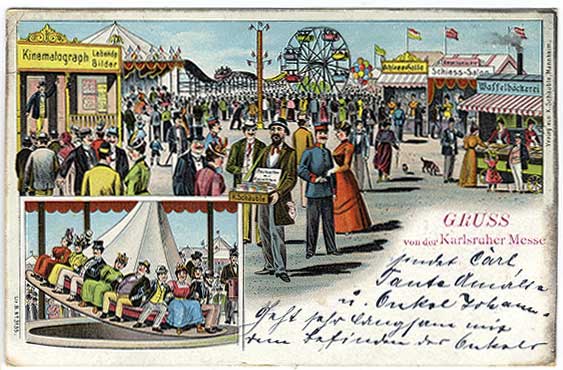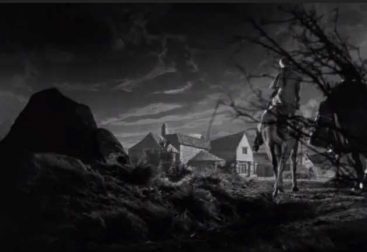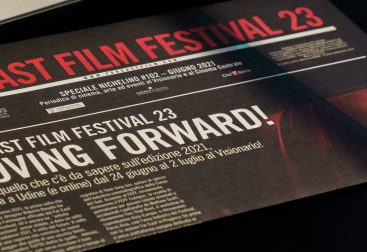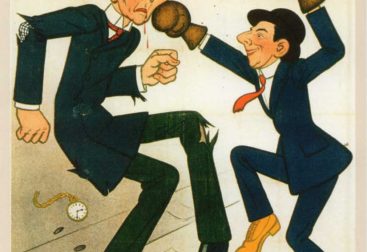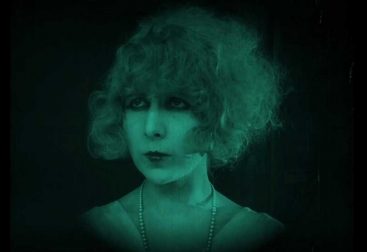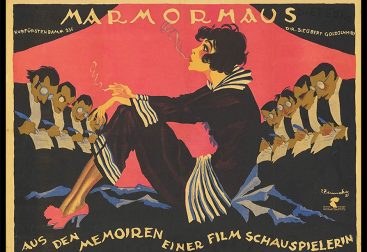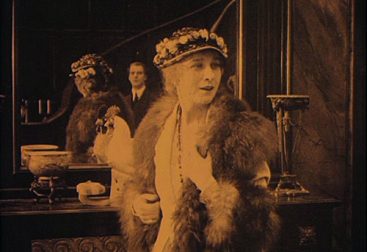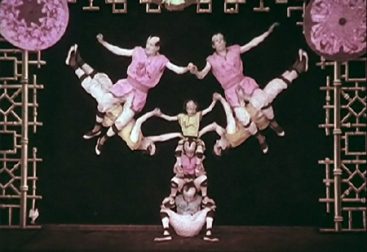Preliminary Remark
The following text is an expanded version of the text that was published in “A look at history – Contributions to Karlsruhe city history” (OT: Blick in die Geschichte – Karlsruher stadthistorische Beiträge), No. 135, on June 17, 2022. The text aims to depict the first years of early cinema in Karlsruhe; i.e. the time after the first film screenings in December 1895 in Paris up to the beginning of the First World War. Film studies generally understand this period of time as “Early Cinema”.
In addition, the historiographical aspect of local film history will also be examined, i.e. how the local film history of the city of Karlsruhe has been researched and processed up to the present day.
These two fundamental aspects of the text are each intertwined, resulting in a perhaps complex mode of presentation.
The first film screenings in Karlsruhe
The first film screenings in Karlsruhe took place on September 5, 1896 and the following days. Soon after the invention of the cinematograph and the first screenings, the French company Pathé sent cameramen through almost all of Europe, so that in the course of 1896 the first film screenings took place in most German cities. The cameras used to record were designed in such a way that the films could also be projected with them.

Advertisement in the Karlsruher Tagblatt, No. 243, September 1, 1896
The Grand Duke of Baden saw the films of the company Pathé at an exhibition in Stuttgart and then invited the cameramen to Karlsruhe. The film screenings then took place from September 1896 in the Stadtgartentheater, which no longer exists today.
The dates of these first performances were not known for a very long time – this was not only true for Karlsruhe, but also for many other German cities. However, in some places there was intensive research into the local cinema culture and also into early cinema, e.g. in Berlin, in Hamburg, in Munich and also in Cologne.
In Karlsruhe, on the other hand, the early years of cinema were shrouded in mist for a long time, which only a publication by Martin Loiperdinger shed light on. As part of the research for the book “Film und Schokolade” published in 1999, intensive research was also carried out in Karlsruhe, so that the dates of the first film screenings could be verified by newspaper advertisements.
However, this publication went unnoticed in Karlsruhe until the supporting association of the Karlsruhe silent film festival “Déjà Vu – Film e.V.” pointed out the dates of the first film screenings when it was founded in September 2008; the BNN (local newspaper: Badische Neueste Nachrichten) reported about it.
Link to the report of the Badische Latest News (BNN) about the founding of the association: BNN, September 4, 2008
The time of ambulant cinemas
What happens after the first screenings? The last years before the turn of the century and the first years of the 20th century were the times of traveling cinemas. Like showmen, the owners of the mobile cinemas moved from one city to the next and showed the films in their cinemas, which by the way they usually had to buy back then. The well-known rental system only came about years later. The films were not called that either, but presented as “living pictures”, as can be seen on a postcard from the Karlsruhe Trade Fair from 1901. In Karlsruhe, the traveling cinemas were regularly on site twice a year, namely for the spring and autumn fairs. The performances were often announced in the press, but mostly without mentioning the title.
Nevertheless, we know pretty well which traveling cinemas were in Karlsruhe when and what they showed. This brings us back to the historiographical aspect. There was no systematic research on this in Karlsruhe itself; that would probably have been too complicated. In a project of the Siegen University of Applied Sciences, financed by the German Research Foundation (DFG), the showmen’s magazine “Der Komet”, in which the traveling cinemas published their programs and whereabouts, was evaluated so that we now have a database and can actually check it , which traveling cinema was a guest at which fair. This project was carried out from 2002 under the direction of Prof. Klaus Kreimeier and thus created essential prerequisites for research into early cinema history.
First permanent cinemas in Karlsruhe
Let’s get back to the development in Karlsruhe. The popularity of film screenings continued to increase, the demand grew, and in the middle of the first decade the film screenings began to be more frequent in different places and locations in the city, e.g. in the Colosseum cabaret. The founding of a permanent cinema was in the air and was not long in coming.
During 1907 the Freiburg company Weltkinematograph organized film screenings in Karlsruhe. The company was primarily a production company that mainly shot documentary films such as “Through the Alb Valley to Sankt Blasien” (OT: Durch das Albtal nach Sankt Blasien); (this film has been preserved in the collection of the Dutch Film Museum). The company, based in Freiburg, also founded a whole chain of cinemas. That also happened at the beginning of 1908 in Karlsruhe. Little was known about this cinema until now because there are no building files from the time when it was founded. One can or must assume that this cinema was built without a building permit, because there were no regulations for cinemas at all. The cinema was located in the building at Kaiserstraße 133 right next to the small church. Presumably simply existing shops and/or stores were converted into cinema. In the history of cinema, the term “store cinema” has become commonplace for this type of cinema, which was found in practically every city. The cinema was first called “World Cinematograph”, later “World Cinema”. Construction files are only known for a later date, when an application for a conversion was submitted.
At the same time, the court baker Otto Alban Kasper had started showing films in a theater. And he decided to set up a cinema in a new building. This cinema, the Residenztheater, was the first cinema in Karlsruhe that was planned as such.
The history of the Residenztheater has been well documented by Gerhard Bechtold in his 1987 book “Schauplätze”. The publication joined a long list of studies devoted to the emergence and development of local cinema and film cultures. However, the conditions for film studies research at that time were more than difficult. This should also emerge implicitly from the publications listed above, which were actually only intended to provide the basis for well-founded film studies, and all of them came about later. Therefore, Gerhard Bechtold cannot be blamed for not being able to find the dates of the first film screenings in Karlsruhe. Unfortunately, here in Karlsruhe, the wrong impression was created that local film history really began with the construction of the Residenztheater, almost out of nowhere, so to speak.
The collective memory and its dubious sources
So that I am not misunderstood, I would like to comment a little more extensively on the way in which this impression was created. If you like, you can describe the publications and the work of the city archive as the “official historiography” of the city of Karlsruhe. In addition to this official one, there is also a historiography that manifests itself through many other channels and media. This is how what I would like to call “collective memory” is created.
With regard to the historiography of early cinema in Karlsruhe, these were sporadic articles, in particular in the local newspaper of the city of Karlsruhe, i.e. in the “Badische Neueste Nachrichten”, as well as in the supplement published by the city administration to the weekly free “Kurier”.
I would like to cite a first example: On August 30, 1986, Alexander Kohlhaas* wrote an article in the Badische Latest News entitled “When the pictures in Karlsruhe learned to walk”. And the subtitle said: “First screenings in the “Apollo” variety theater.” Here is the link to the article in the BNN, Aug. 30, 1986.
In the article, Alexander Kohlhaas explicitly refers to the book by Gerhard Bechtold, which was still unpublished at the time. In my opinion, however, Bechtold’s statements do not allow the conclusion that the performances in the Apollo Theater were actually the first film screenings in Karlsruhe. Rather, the sources given (newspaper advertisements) are more likely to be found by chance and not the result of systematic research.
The publication of such an article is all the more problematic, as it actually got stuck in the collective memory of those who dealt intensively with cinema culture in Karlsruhe (including the author). And this view, that the performances mentioned would be the first in Karlsruhe, was more or less strongly associated with the publication by Gerhard Bechtold.
NB: when the Apollo Theater was then converted into a cinema only, it was given the name “Schauburg”, which is now the oldest existing cinema in Karlsruhe.
Another example is currently being researched.
If you take these examples together, the impression I have described above can only be strengthened: in the collective memory of people interested in cinema, various dates for the first film screenings were stuck for a long time. And then it took a little longer and required a few attempts before the actual dates of the first performances were known to the general public and also to official historiography.
Back to the publication by Gerhard Bechtold:
At the time of his study of Bechtold, it was certainly appropriate to rely on the existing building records to represent the period at the end of the first decade of the 20th century. However, a cinema like the world cinematograph did not necessarily come into the focus of the historiographer.
I hope that what I have said so far makes it clear that there was a continuous development from the first film screenings at the trade fairs to the founding of cinemas in the first and second decades of the last century. It is important to hold on to that.
The First World War als Turning Point
As a result, more cinemas were built up until the beginning of the First World War, so that according to the documents in the city archive there were seven cinemas at that time (the number of seats in brackets, this information from 1917):
Kaiserkinematograph, Kaiserstraße 5 (180)
Weltkinematograph, Kaiserstraße 133 (128)
Zentralkinotheater, Karl-Friedrich-Str. 26 (100)
Palast-Lichtspiele, Herrenstraße 11 (373)
Residenz-Theater, Waldstraße 30 (304)
Luxeum, Kaiserstraße 168‘ (276)
Metropoltheater, Schillerstr. 26.
The cinema “Palast-Lichtspiele” shows deserve special attention. The name alone should make it clear that this cinema was aimed at the upper classes of the Karlsruhe population, and so the “Palast-Lichtspiele” in Herrenstrasse, roughly opposite the current Badische Beamtenbank, was the first cinema in Karlsruhe to have a gallery.
For historiography of film, the time of Early Cinema came to an end with the start of the First World War. The year 1914 was a turning point in many respects, but this only became fully apparent during the course of the war. The time of the programs, which consisted of several short to medium-length films, was coming to an end. More and more feature films came to the cinema, as we still know them today. When the war broke out, the import of foreign films was largely banned. particularly French films, which had made up a significant proportion of the programs up until the outbreak of the war. This applied above all to French films, which had accounted for a significant proportion of the programs up to the outbreak of the war. This meant an opportunity for the German film industry, because the competitor had disappeared. However, the war also brought with it considerable production and distribution restrictions.
The State of Affairs
Finally, we would like to turn our attention back to the historiographical aspect. As in other cities, a prominent anniversary opened, in Karlsruhe it was the 300th city birthday, an opportunity to further explore local cinema and film history. The city archive published an illustrated book on the history of the city, which also took into account the history of the cinemas. In addition, with the generous support of the city of Karlsruhe and the media and film company of the state of Baden-Württemberg, the year 1915 could be researched in detail. An investigation was carried out that makes it possible to examine the very general theses of film historiography on the basis of the local situation. The study covered all film screenings in Karlsruhe in 1915, insofar as they were published in newspaper advertisements. The data are all recorded in the Geman Early Cinema Data Base and are also accessible at any time (https://earlycinema.dch.phil-fak.uni-koeln.de/) On the other hand, the study also revealed the limits of historiography: from the film screenings of the cinemas that didn’t place any newspaper ads or only placed them irregularly, all knowledge has been lost.
A required addendum
The exhibition of the Kinemathek and the Museum for Literature on the Upper Rhine in 2008.
The limited space that was available for this text in the “City-historical Contributions” and the formal structure of the article did not allow us to deal with the exhibition in 2008, although in several respects it occupies a problematic place in the historiography of the local cinema and film culture. It is therefore necessary to present some details in relatively great detail.
Anyone who knows the history of local cinema in Karlsruhe will probably know immediately that the exhibition was intended to commemorate the founding of the Residenz-Lichtspiele in 1908. But wouldn’t it have made much more sense to remember the first film screenings in Karlsruhe, which took place in 1896? Wasn’t the date of the first film screenings in Karlsruhe known to the cinematheque at the time? We cannot answer this question unequivocally, but we think it is possible. Because the Kinemathek had contacted Professor Martin Loiperdinger when preparing the exhibition. We learned this from Martin Loiperdinger himself when we visited the exhibition with him. However, the Kinemathek had not followed up contact with Martin Loiperdinger.
And so, as already mentioned, the Kinemathek celebrated the founding of the Residenz-Lichtspiele in 1908 with this exhibition and thus reinforced the widespread view, manifested in the collective memory, that the history of cinema in Karlsruhe really only began in 1908.
Of course there was no reference in the exhibition to the first film screenings in Karlsruhe in 1896; the oldest document in the exhibition was the postcard that we have shown above the tiel.
Prof. Martin Loiperdinger and the author of this text were both disappointed and irritated; the author, who knew the exhibition organizers and those responsible, was more or less stunned.
The Kinemathek had missed it and failed to announce the date of the first film screenings in Karlsruhe in a very effective way.
Setting up the exhibition was certainly a big challenge for the cinematheque and its small team. There was no publication, no exhibition catalogue. Later we found out that a publication had been planned and was about to be completed. The cinematheque had blocked the publication.
A few years later, despite strong resistance from the Kinemathek, we prepared the research of the year 1915 under the title “Cinema in Karlsruhe 100 years ago” for the city’s birthday in 2015. One day a crisis meeting took place in the cultural office of the city of Karlsruhe, in which representatives of the Kinemathek, the city of Karlsruhe and the supporting association of the Karlsruhe silent film festival took part.
In the course of the conversation, we asked whether we could use the unpublished publication of the 2008 exhibition for our preparation. As a result, Alfred Meyer, then director of the cinematheque, simply denied the existence of this unpublished material. When asked by the representative of the cultural office, Alfred Meyer had to repeat his assertion.
At that time, however, we had information from a very reliable source, so that it can only be stated here that Alfred Meyer, despite better knowledge, denied the existence of the unpublished publication. This situation can also be described differently.
Once again, the author felt a certain bewilderment, although he already had extensive, similar experiences with the director of the cinematheque.
Ultimately, however, this cannot be about the author’s experiences with the director of the cinematheque at the time. The problem is, or rather was, that Alfred Meyer subordinated relevant research into the local cinema culture to his particular interests. Whether he also equated his particular interests with the interests of the Kinemathek Karlsruhe is beyond the author’s judgment.
The result was that the exhibition went by the Karlsruhe public like smoke and mirrors. Who else can remember her? If at least the planned publication had appeared – however, it must be said that a publication that had not taken into account existing important findings and the state of research at the time would have been of dubious value. Once again, she would have served the collective memory of the city of Karlsruhe with incorrect or at least incomplete information.
Links to reports about the exhibition in the Badische Neueste Nachrichten: BNN, February 12, 2008, BNN, February 23, 2008 (no translation)
* So far, even with the help of BNN, we have not been able to contact Alexander Kohlhaas and ask him whether he agrees to the publication.
Some references:
Martin Loiperdinger, Film und Schokolade, Frankfurt, 1999
Thomas Elsaesser, Filmgeschichte und Frühes Kino, München, 2002
Michael Töteberg, Filmstadt Hamburg, Hamburg 1990
Gerhard Bechtold, KINO – Schauplätze in der Stadt, Karlsruhe, 1987
Catalog 13. Stummfilmfestival Karlsruhe, “Geschichte und Film”, 2015
Josef K. Jünger
